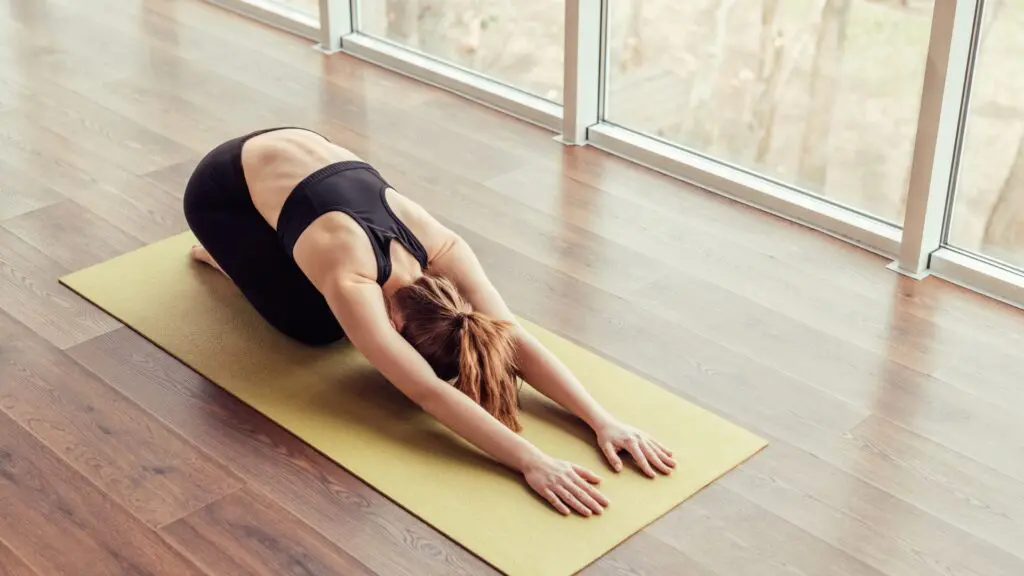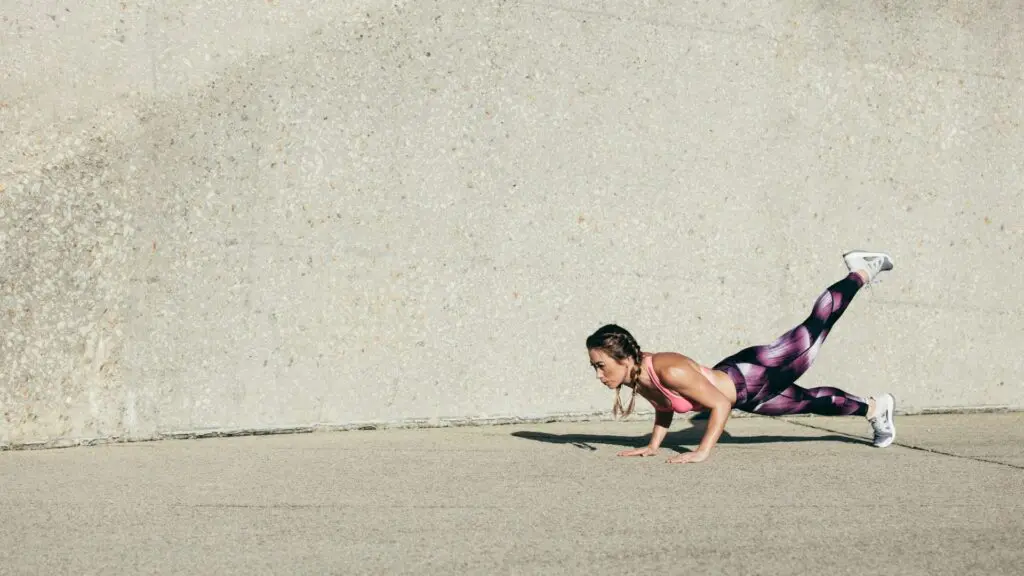
Is Yoga Right For Low Back Pain Or Is It a Big Mistake?
Yoga is a healthy practice enjoyed by millions around the world, it is an extremely accessible form of activity and has numerous benefits for both body and the mind. When you’re suffering from low back pain or sciatica you feel vulnerable, to say the least. With millions of people around the world struggling to recover from their low back injury, looking for something “safe” but effective, is it any wonder they turn to gentle practices such as Yoga in an effort to get some relief.
But is this the right move?
Is Yoga really good for low back pain?
What about the “Yoga for back pain” classes or videos, surely they’re perfect for recovering from low back pain?
While many will find these practices feel nice at the time they are done, when we peel back the surface and look a little deeper, perhaps they aren’t quite as healthy for your low back as you first think. Today we’ll be exploring this in detail to help you evaluate what role Yoga should play in your low back recovery, short, medium & long term.
How yoga can help your health & wellbeing
There are many benefits Yoga can bring beyond what we will discuss today, but the simple truth is there are benefits Yoga can bring. If you’re doing yoga in a class structure, the social element. The meditative component of Yoga is an aspect many rely on to calm their minds in such a fast paced modern world, helping reduce stress, breath better and the list goes on. Not to mention the obvious physical attributes. Improved flexibility and body control that some of the more challenging movements in Yoga develop. For example, even a simple downward dog is a fantastic place to start.
A review of the downward dog position:
This is a position perhaps iconic to Yoga. In order to do this, you must have great flexibility in the back of your legs and ankles, tremendous hip flexibility, as well as both flexible and very strong shoulders in order to look like a “triangle” and not a semi-circle. Make no mistake, there is tremendous respect for the skillful Yoga practitioners in regards to the physical development they have made. These exercises and poses require a high level of numerous physical characteristics that the average person simply does not have.
For some reason a downward dog is looked at as a less intimidating activity than a 100kg deadlift but I have a feeling that there will be more “average people” who have the physical development that make them able to deadlift 100kg than there are able to perform a proper downward dog.
This is a roundabout way of saying there is perhaps a lack of appreciation for just how challenging PROPER form on many Yoga exercises is, and how long it might take to develop missing skills necessary to perform these PROPERLY. We’ll come back to this later.
Is yoga right for you when you have lower back pain
Considering the difficulty, both technically and physically, is it the wisest move to start learning to do a downward dog, or other Yoga pose when you’re in the throes of a low back injury? This should already leave you questioning whether Yoga is right if you’re struggling with low back pain or sciatica as the Downward dog itself is a common “top Yoga exercise for low back pain” even featuring alongside the “extended triangle” pose on the popular health website Healthline.
The big mistake yoga makes for low back pain
Yoga is a movement and “flowing” practice, the whole premise for many of the positions would be to move fluidly into one position or another, of course there are holds of certain poses which are separate. The issue arises in that Yoga does not have principles for an injured low back that are applied. Of the other exercises you will commonly see in any “yoga for back pain” or “yoga for sciatica” video or class, 100% involve moving the spine in one way or another, most frequently rounding it.
If you understand low back pain, you’ll know that most who injure their low back, do so going forwards, rounding the lower back, most who have back pain also spend a huge amount of their day sitting, with a rounded low back. The part of the back that limits forward bending, the deep ligaments have been damaged because of too much forward bending.
Do you really need more forward bending then? Surely that just makes the underlying problem worse?
EXACTLY!
There are many reasons why forward bending feels good which we won’t go into here, suffice to say it is about as useful as scratching yourself if you’ve been stung by nettles, it feels better in the moment and only makes the problem worse.
What about backward bending yoga poses then?
You’d be forgive for thinking that alternative poses like those below would help:
- Sphynx pose
- Cobra pose
- Locust post
These all have extensions so they must be good, right? Wrong. Although extension can often be favorable sooner rather than later, the result of injuries to the discs in the lower back and the surrounding ligaments is that there is laxity and instability in the joint that’s injured. Therefore Instead of smoothly bending backwards like a healthy vertebral joint does, these shear or slide backwards, aggravating the back and often irritating the little nerve roots, like those of the sciatic nerve.
What Yoga cannot do to help your lower back pain get better
On top of this, yoga is predominantly body weight, you can only ever perform your Yoga movements with your own bodyweight, as a general rule. Therefore you have no capacity to help guide the rebuilding process in your lower back. Your spine needs to have load put through it AT THE RIGHT TIME and in the right way, carefully, in order to help restore its strength and ability to bear load easily. As long as this remains true, Yoga will unfortunately fall far short of being good for recovering from low back pain without modifications.
Yoga is not built for your lower back injury or sciatica
Hopefully now you’re starting to appreciate Yoga for what it is, perhaps more appropriately categorized as a “sport”, in so much that it requires a lot of flexibility, coordination, and strength in certain ways in order to perform it effectively.
When you have an injury, starting a sport is the WRONG move. Wait until you’ve recovered and THEN you can start learning, practicing and enjoying these physical activities again.
We’ll now cover some principles to help you better understand Yoga’s flaws so you’ll know how and when to go back to Yoga if it is something you enjoy, to benefit from all the other positive aspects this popular practice has to offer.
Yoga lacks principles for your low back health
Yoga is not built for helping lower backs and unfortunately if people that are trained professionals are still making the same mistakes when helping people with low back pain, what chance does your Yoga teacher who’s done a comparatively short course on back health have at putting the right plan together? Still Physiotherapists, Osteopaths, Chiropractors and other musculoskeletal specialists insist on recommending exercises that go against these principles, we’ve seen it for years and it will no doubt continue, which is why so many turn to Back In Shape, or visited our clinics for help, frustrated that nobody was able to help their back pain.
Hopefully this puts things into perspective, onto the principles.
Principle 1: Your injured back needs stability not movement
You need to develop stability in your low back, not add more flexibility. Rounding, twisting and other spinal movements do not have a place in the early rehabilitation.
Principle 2: Your back needs less pressure in the short term
Your spine itself needs to have pressure taken off, rounding the back does not do this as we discussed on a recent podcast episode of decompression for your low back.
Principle 3: Support and maintain the lordosis
The natural arc in your low back needs to be supported regularly to offset daily life’s continual pressure to flatten the spine.
Principle 4: Build stability and control
You must learn to develop strength in the muscles and control your spine as you move through daily life.
Principle 5: You must add resistance for long term results
All successful low back rehabilitation programs include the addition of gradually increasing load through the lower back as a means of rebuilding strength to the spine.
What role could Yoga play in your long term low back health and wellbeing
Hopefully you’ve not been put off Yoga but you have a new appreciation and respect for it, and those expert yoga practitioners. Yoga is not right for the average person who has low back pain and sciatica, it certainly is not a sole practice that will “fix your back pain”. We could make the claim that those skilled in Yoga practice could intelligently incorporate aspects of yoga to maintain hip mobility while combining this practice with load bearing exercises and other practices to rebuild the low back, but this requires more expert knowledge and creation of a structured sensible plan.
This is one of the reasons we place so much emphasis on education within the Back In Shape Program. Each of the Phases is there to teach you so you understand the spine in much more detail. So when the time comes you could incorporate a good application of selective Yoga to enhance your long term health and wellbeing.
Making customised Yoga a part of your long term back health practice is certainly a path forwards we can happily endorse once you’ve built strength and competence back into the low back and your low back health has improved. For a healthy person, with no back pain or sciatica, done together with effective targeted resistance workouts, at home or in a gym, you’ll find that Yoga could provide an excellent PART of your long term back health.
If you want a little more help with with your back health, stretching your back or just getting your Back In Shape again, and free from back pain or sciatica then there are 3 ways we can help you:
- The Podcast and Youtube channel as a great source of free information on all things back & spine health.
- The membership to Back In Shape which gives you access to the full program and everything you need to rehabilitate your lower back from home.
- Book in with us for a virtual or “in-person” consultation & treatment at the Back In Shape Studio









Responses